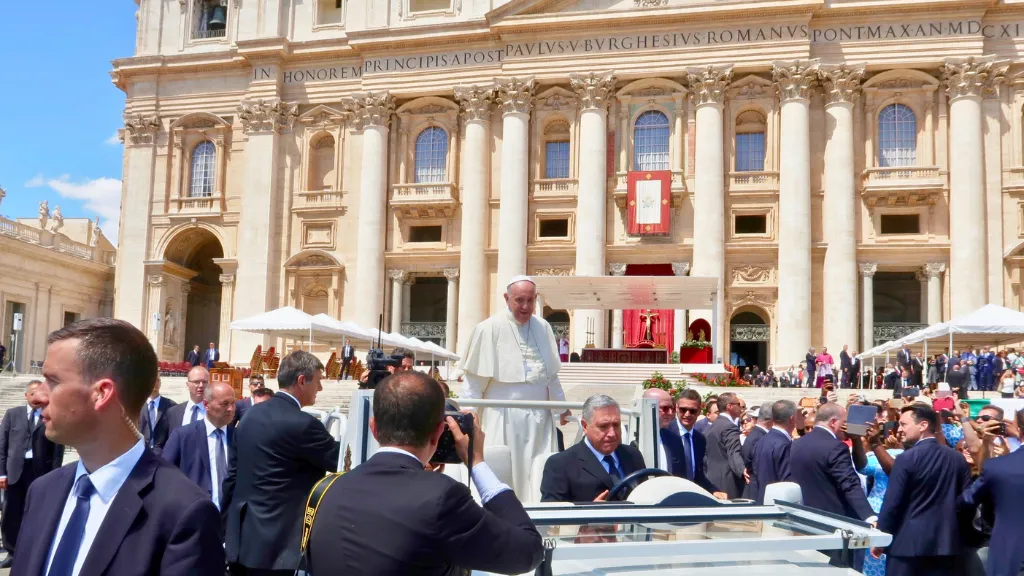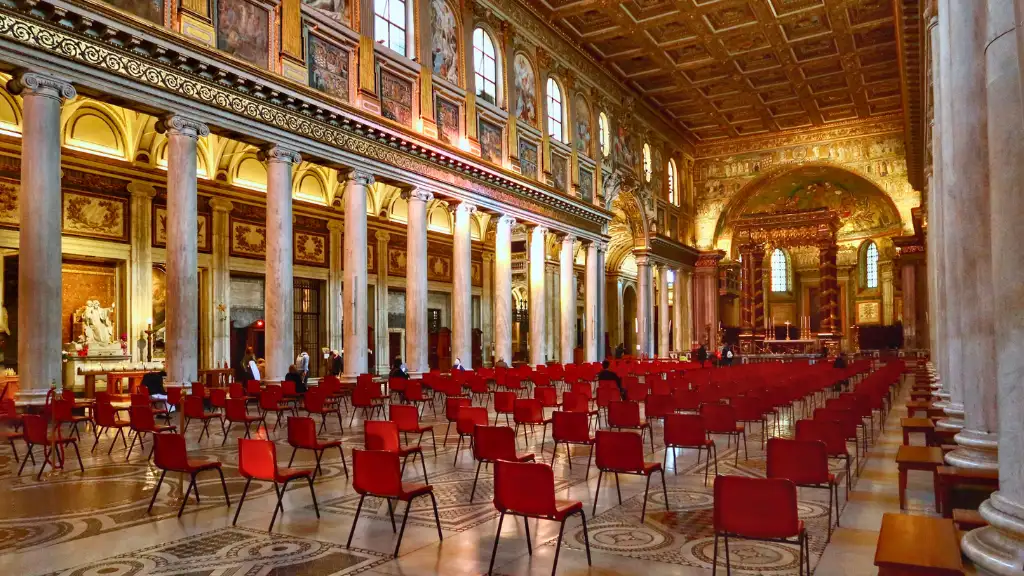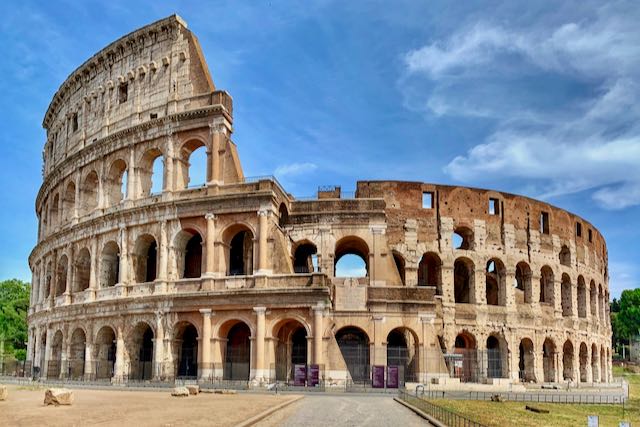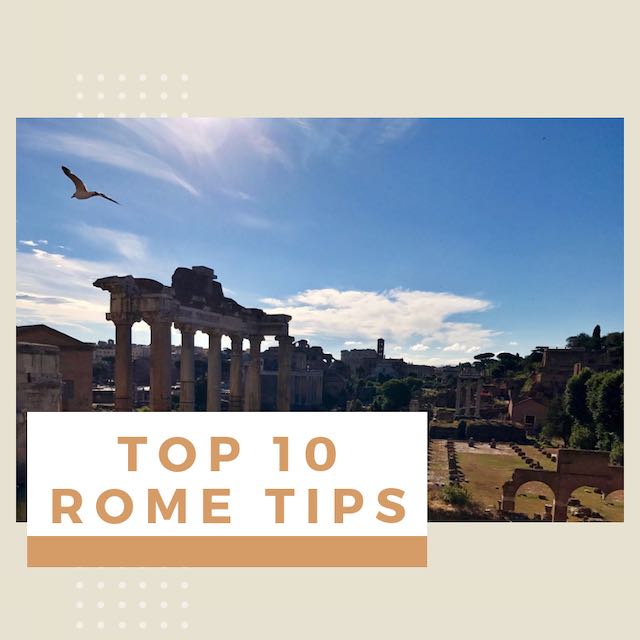- Sign up & get a FREE ebook Subscribe NOW!
- Romewise Home Page
- papal jubilee
Papal Jubilee in Rome - What's it all about?
Are you planning to make the almighty pilgrimage for the Papal Jubilee in Rome?
Stick with me to learn everything you need to know about the Jubilee celebrations set for 2025.
Everything you need to know about the Papal Jubilee year in Rome
If you’re planning to visit Rome in the near future, you may have heard about the upcoming 2025 Jubilee year.
And if you’re not an active member of the Catholic Church (or don’t know its customs), you might be wondering what the Jubilee is, what it entails and what you’ll be able to access while it’s in session.
 This branding was all over the city through 2024 showing all the work that was being done to prepare
This branding was all over the city through 2024 showing all the work that was being done to prepareThis rundown of the Papal Jubilee in Rome will take you through everything you need to know about the upcoming celebrations.
From the definition and history of the Jubilee to the events you should expect during a trip, you’ll find it all here.
Now let’s get to it.
On this page we'll be taking a look at:
- What is a Jubilee Year
- The history of Papal Jubilees
- The opening of the Holy Doors
- What Events happen in Rome during a Jubilee year
- What to expect from the 2025 Jubilee celebrations
What happens now Pope Francis has passed away?
On April 21, 2025, Pope Francis passed away. The Papal Conclave convened in early May and elected Cardinal Robert Francis Prevost as the new Pope, who took the name Pope Leo XIV. He was formally inaugurated on May 18, 2025, in St. Peter’s Square.
The 2025 Jubilee will continue under Pope Leo XIV’s leadership, with the original program largely intact. Some ceremonies were briefly paused in the transition, but the Jubilee remains on schedule and will carry on through December 2025.
Make sure to check the official Jubilee website where all changes and amendments to the schedule will be confirmed.
What is a Jubilee Year?
A Jubilee in the Catholic Church is a year-long celebration that happens every 25 years and is said to be a time to re-establish a relationship with God.
It’s a year that includes special Masses, thanksgiving to God, and a lot of pilgrimages.
As you can imagine, Rome gets packed.
It’s when the Church offers faithful followers the chance to ask for “plenary indulgence” and receive forgiveness for their own sins and the sins of any deceased relatives.
During the Jubilee, Catholics can go to confession and receive the Eucharist by making a pilgrimage to any of the major basilicas in Rome or a cathedral of a local diocese.
If they do this, they receive a “plenary indulgence”.
 The Papal basilica of St Paul Outside the Walls is one of the important churches in Rome that plays a part in the Jubilee
The Papal basilica of St Paul Outside the Walls is one of the important churches in Rome that plays a part in the JubileeAn ordinary Jubilee is when the community comes together on the typical 25-year mark.
On the other hand, an extraordinary Jubilee happens when holy years are called for outside of the typical cycle.
So, before or after the usual 25-year Jubilee event.
When such extraordinary Jubilees happen, it’s usually because a particular theme or event has cropped up.
The most recent extraordinary Jubilee took place between December 2015 and November 2016 under Pope Francis.
It was called the “Extraordinary Jubilee of Mercy” and was designed to direct the Church’s attention to mercy (as you might expect!).
It’s also worth mentioning that this Jubilee marked the fiftieth anniversary of the Second Vatican Council’s Closing.
2025 Jubilee theme
The theme of the 2025 Jubilee will be “Pilgrims of Hope”.
Along with the typical Holy Door ceremony, there will also be special Papal audiences and themed Masses.
Pilgrims will also be encouraged to give confessions to receive Jubilee indulgences, which can take place at either of the basilicas in Rome.
The history of Papal Jubilees
The Jubilee process itself was born from Jewish tradition and was meant to be a time for universal pardon.
In the Old Testament (Leviticus 25:10), the text claimed that: "Thou shalt sanctify the fiftieth year, and shalt proclaim remission to all the inhabitants of thy land: for it is the year of Jubilee”.
So, it truly is an age-old tradition.
In Western Christianity, the very first Jubilee took place in 1300 under Pope Boniface VIII.
It came when there was a lot of general suffering from plagues, poverty, and wars.
So to bring the community together and mark the beginning of a new century, the pope declared a special year of reconciliation.
By creating the Jubilee, the pope intended for the Church to give pilgrims to Rome indulgences and strength that would soften the terrible times they were dealing with.
After the first Jubilee went down well, Boniface declared that they should take place every one hundred years.
But they were so popular that Pope Clement VI moved the Jubilee event to every 50 years.
Just a few decades later, Pope Urban VI stated that the Jubilees would take place every 33 years in remembrance of the life of Christ.
It wasn’t until the late 1400's that the 25-year rule came into place (and has remained ever since).
Important previous Catholic jubilees
There are a few major Jubilees that have taken place over the years. The most famous of these are:
- 1425: Martin V celebrated a Jubilee that marked the opening of the St John Lateran Holy Door for the first time.
- 1450: Pope Nicholas V marked the last Jubilee in the 50-year cycle.
- 1675: Under Clement X, the Colosseum was reconsecrated and the permission to hold bull fights there was rescinded.
- 1875: Jubilees resumed after the Napoleonic wars and took place after the annexation of Rome. This marked the resumption of the government of the Papal States.
- 1933: An extraordinary Jubilee was announced to mark the 1900th anniversary of the death of Jesus. It featured an impressive 620 speeches across the year, with 2 million pilgrims visiting Rome.
- 1975: The Jubilee in this year was dedicated to reconciliation.
- 1983: Pope John Paul held a Jubilee to celebrate the 1950th anniversary of Jesus’s death and resurrection.
- 2000: Pope John Paul II proclaimed this as the Great Jubilee of the Year 2000. Over the year, the pope made a public request for forgiveness of sins committed in history. There was also a World Youth Day in Rome held during this Jubilee. Another major standout moment was the pope’s pilgrimage to the Holy Land, joining the Catholic Church, Judaism, and Islam.
- 2015: Pope Francis declared a Jubilee for the end of the Second Vatican Council. Pope Francis stated that this was the Jubilee dedicated to mercy.
The opening of the Holy Doors
The opening of the Holy Doors is probably the most famous part of any Jubilee year, and it marks the beginning of the year-long event.
It involves the pope striking the brick wall that closes of the door with a silver gavel which signals the opening of the Church to the pilgrims who descend on Rome.
The doors are said to symbolize the Gates of Mercy opening, giving a clear sign that God is asking the pilgrims to repent and make the journey from sin to grace.
So, by going through these special doors, the pilgrims should receive any plenary indulgences associated with the Jubilee year.
The first door opened is the Holy Door of St. Peter’s Basilica in Vatican City.
The other holy doors that open are the Archbasilica of St John Lateran, the Basilica of St. Paul Outside the Walls, and the Basilica of Santa Maria Maggiore (St Mary Major).
These four doors belong to the four papal basilicas in Rome.

Watch: How to Go Through the Holy Doors
If you’re wondering what it’s really like to pass through the Holy Doors during the Jubilee, I’ve put together a step-by-step video guide - click here to watch.
At the end of the holy year, Pope Leo XIV himself will close the door in a dedicated ceremony.
It’s then sealed again, marking the official end of the Jubilee.
Visit the Major Basilicas beyond the Vatican with a private guide and learn more about the history of Jubilees in this extra special tour.
Complete with private guide and driver to take you around the city, you'll learn why the Jubilee is such an important event and much more!
What events take place in Rome during a Jubilee year?
The Jubilee year in Rome is marked by several key ceremonies and traditions:
- Opening of the Holy Doors - The Jubilee began with the opening of the Holy Door at St. Peter’s Basilica on December 24, 2024. On the following Sunday, the Holy Door of St. John Lateran was opened, followed by St. Paul Outside the Walls and St. Mary Major in early January 2025. These doors will remain open until December 2025, when they are sealed again to mark the end of the Jubilee. For details, see the official Vatican page here:
 The altar relics in St John Lateran hold parts of Saint Peter and Paul, making it one of the most holy places in Rome
The altar relics in St John Lateran hold parts of Saint Peter and Paul, making it one of the most holy places in Rome- Pilgrimage & Indulgence - Pilgrims are encouraged to visit the four papal basilicas, receive the sacraments of confession and communion, and pray for the Pope. By doing so, they can receive the special Jubilee indulgence.
- Papal Liturgies & Celebrations - The Pope presides over major Masses during the year, including Christmas, Easter, Pentecost, and the Feast of Saints Peter & Paul (June 29), as well as the closing liturgy in December 2025.
- General Audiences & Angelus - The weekly Wednesday Audience and Sunday Angelus blessing in St. Peter’s Square continue throughout the Jubilee year. Click here to find out everything you need to know about getting your Papal Audience and Mass Tickets.
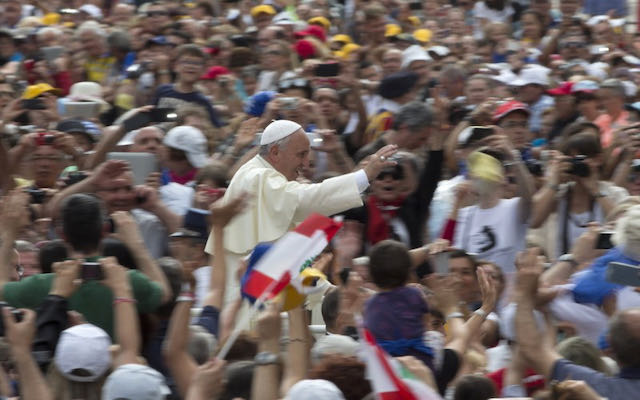 Attending a Papal Audience during the 2025 Jubilee is an unforgettable experience
Attending a Papal Audience during the 2025 Jubilee is an unforgettable experience- Themed Pilgrimages & Gatherings - Special events are scheduled for families, youth, priests, workers, the sick, and other groups. Click here for the official Jubilee Calendar of Events.
Want to find out more about the 2025 Papal Jubilee?
Watch our video here all about what to expect and if you should plan a trip to the Eternal City.
Ready to plan your trip?
Book your train
Planning to travel between cities in Italy and other parts of Europe?
Use Trainline to see all the different options available across the different rail companies.
Find your hotel
Find your perfect place to stay in Rome.
Use Booking.com to choose between hotels, guesthouses, and self-catering apartments in neighborhoods throughout the Eternal City.
Buy your TurboPass
Purchase the convenient Turbopass and visit all of Rome's top attractions including the Colosseum, Pantheon, and Vatican.
With one handy pass, it's all included.
What to expect from the 2025 Jubilee celebrations
If you’re planning to head to Rome as a pilgrim, the general run through of events above should give you a decent idea of what to expect.
Rome will be especially crowded throughout the Jubilee year. St. Peter’s Basilica, the Vatican Museums, and the other papal basilicas will all see long lines, and access may be restricted during papal ceremonies and special events. Security will also be tighter in and around Vatican City, with bag checks and controlled entry points.
For that reason, make sure you always check ticket availability and entry rules directly on the official Vatican Museums site.
While entering the Holy Doors is always free, you should expect long waits at St. Peter’s Basilica in particular.
If you’d like to make the most of your visit by combining the Holy Doors with a guided tour of the Vatican Museums, Sistine Chapel, or one of the papal basilicas, it’s best to book in advance
Public transport, especially Metro Line A (Ottaviano and San Pietro stops), will be under pressure during Jubilee events, so be prepared for crowded trains and longer travel times.
 Renovation and cleaning works have been ongoing for some months now to get Rome's popular sights looking pristine
Renovation and cleaning works have been ongoing for some months now to get Rome's popular sights looking pristineOne positive aspect of the Jubilee year is that the city will be virtually pristine.
Lots of work was done to get Rome in tip-top shape for the celebration, meaning the sights are looking wonderful.
No matter what season you visit Rome, here are 4 essential things we recommend never leaving home without:
How crowded will it be in 2025?
While parts of Rome are busier this year, the new normal is that Rome is pretty much always busy.
The good news is that pilgrims will be coming through the year and so will not be concentrated at one time.
Top sights like the Colosseum and Vatican Museums will continue to be very popular but if you look at visiting smaller and lesser-known sites, you should be able to get in no problem.
Romewise's Top Travel Resources
Ready to book your trip to Rome? Take a look at these helpful links to companies we use and trust:
- Keep your travel spending simple with the Wise card, which removes all the worry about exchange rates and high transaction fees all over the world
- Search for and book your perfect accommodation
- Our complete guide to what to pack for Rome
- The number one travel accessory, a multi-point travel adapter and voltage converter
- Browse a huge range of tours in Rome and beyond
- Experience unique tours and special access to Rome's most popular sights
- Protect yourself with comprehensive travel insurance
Within this post there are some affiliate links for products and services. For more details about our affiliate policy click here.
Get your 100% free Rome trip planner now!
Simply sign-up today for our free newsletter and get the Romewise Quick Start guide to Rome:
We are committed to respecting your data. Click for our Privacy Policy.
Comments? Questions? Suggestions?
Please come over to the private Romewise Facebook group and join in the conversation.
You will often find me there, happy to answer your questions / comments!
You will also meet other Rome lovers and experts, too.
What are you waiting for?
- Romewise Home Page
- papal jubilee

